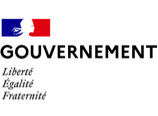Where do I start with CE marking?
01.why CE marking?
02. I define the perimeter
03. Who delivers it?
04. I want to know more about the regulatory framework
05. I surround myself with the right skills
06. I set up a QMS
07. I prove my clinical claims
Questions you may have
What is the new European regulation?
European regulations on DM and DM-DIV were profoundly modified in 2017 with the publication of two new European regulations:
- For DM: Download MDR - Medical Device Regulation (medical-device-regulation.eu)
- For IVD-MDs: The European Union In Vitro Diagnostics Regulation - Regulation (EU) 2017/746 (EU IVDR)
- To understand the main changes they bring: https://ansm.sante.fr/actualites/nouveaux-reglements-europeens-relatifs-aux-dispositifs-medicaux
What are the main standards you need to know to prepare for CE marking?
To set up a quality management system and build your technical documentation, certain European standards are key. Theyare not imposedby European regulations, but theirapplication is strongly recommended. Indeed, compliance with them may be an assessment criterion for the notified body responsible for CE certification. Access to these standards is subject to a fee (around a few hundred euros). Here is a non-exhaustive list:
- Quality management system: ISO 13 485
- Product development / software development: IEC 62 304
- Risk analysis: ISO - 14 971, IEC 80 002-1
- Aptitude for use of DM : ISO - 62 366
- Clinical evaluation: ISO - 14 155
What are harmonized standards?
Each regulation has its own harmonized standards: these establish technical specifications that are considered suitable or sufficient to meet the technical requirements of European legislation.
- For DM: Medical devices (europa.eu)
- For DM - IVD: IV diagnostic medical devices (europa.eu)
Does the QMS cover my entire company?
Yes, some parts of the QMS cover company-wide departments, such as security, information systems (account management, etc.) or the human resources department (recruitment, training). In these specific areas, the QMS can cover the whole company.
How much does it cost to hire an ON?
NBs charge daily rates. The number of days required for certification depends very strongly on the nature of the product to be studied: it is therefore extremely variable and consequently difficult to estimate the cost of using a NB.
How long does the certification process take?
The average time required to obtain certification is 18 months. Beware, however, that this time depends very heavily on the nature of the solution to be certified, so it remains difficult to assess. The France 2030 plan is currently working to reduce this critical time for manufacturers.
What support is available to help you through this phase?
As part of the France 2030 plan, a number of initiatives are being implemented to facilitate regulatory procedures for manufacturers:
- Implementing a quality process, obtaining CE marking or developing a clinical or medico-economic investigation: you can be supported and financed by a regulatory expert via the guichet diagnostic. This guichet puts you in touch with and finances half of the service provided by an expert referenced by the Ministry of Health and Prevention. The guichet diagnostic is openaccessible on the BPI France website.
- The training of more students with a profile in regulatory affairs and conformity assessment is the subject of a action de la SASN and a Call for expressions of interest (aimed at educational establishments). Ultimately, it will enable us to fill jobs in this fast-growing profession.

